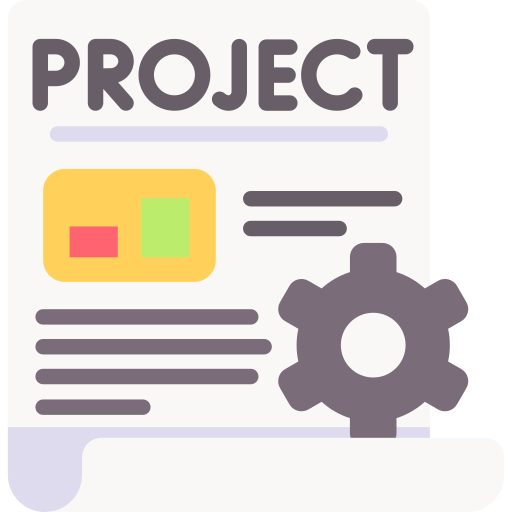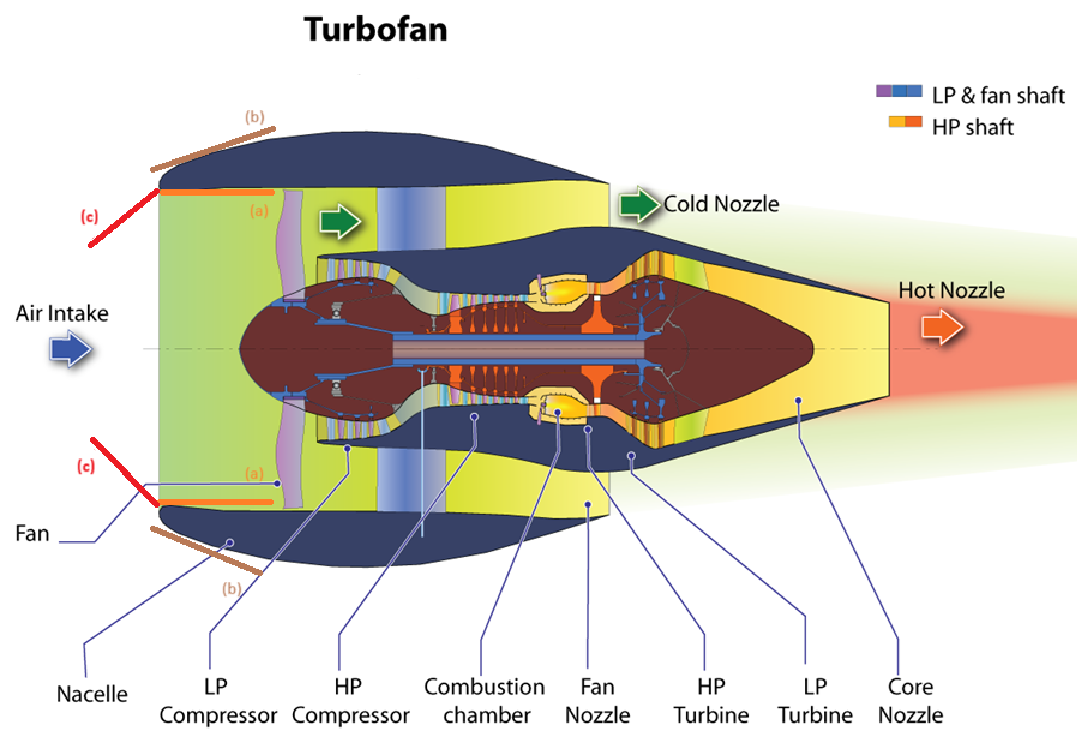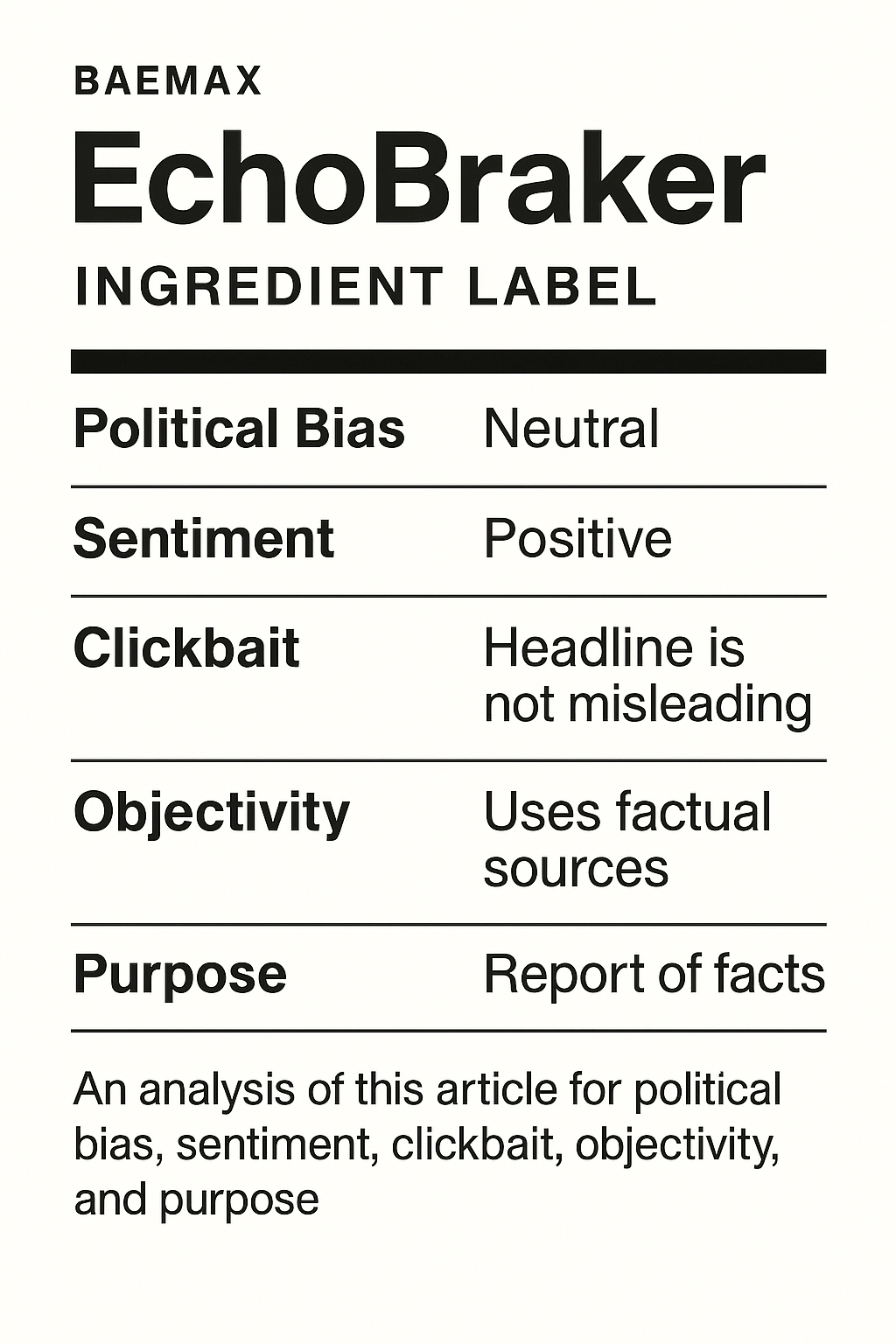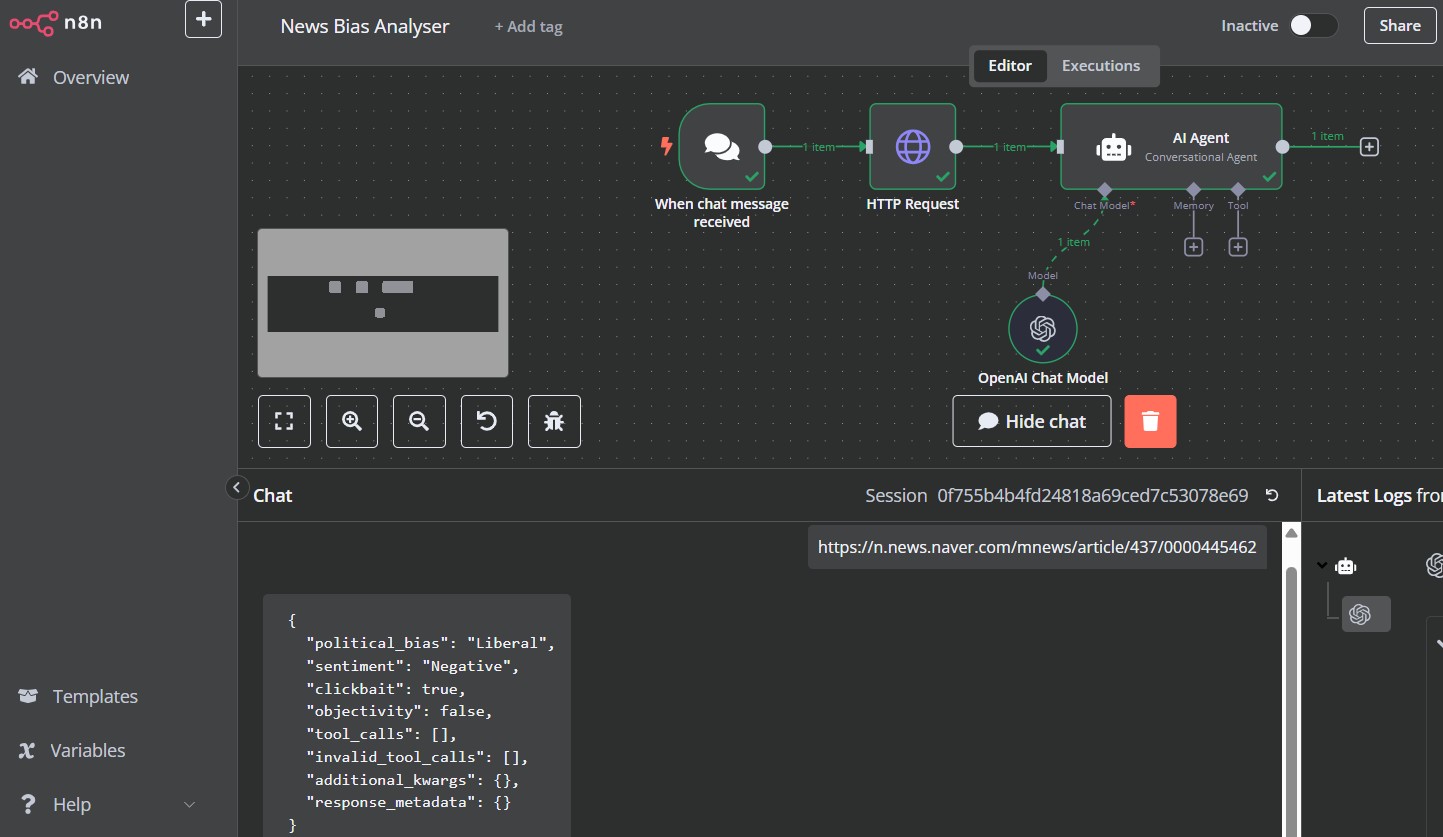Welcome to Baemax

Welcome to Baemax, my personal sandbox for exploring ideas in finance, trading, and technology. This platform showcases the tools and systems I've built during weekends and holidays to solve real-world challenges in data management, strategy testing, and workflow optimisation. These projects are a product of my own curiosity and commitment to innovation, developed during weekends and holidays to address real-world challenges in data management, strategy testing, and system efficiencies.
I’ve created these systems and tools independently to drive efficiency, optimise workflows, and support data-driven insights. Some featured projects include Che's Reporting System (CRS), which transforms complex data into actionable insights, and Pulse (FastAPI), a tool for managing trades, positions, and related financial data. Combined with Sentinel, Pulse supports systematic trading models by monitoring entry and exit strategies, enhancing precision in dynamic environments.
Other key projects include Stock Picker for strategic stock selection and solutions like Stock Data Saver and Ticker Publisher, designed to improve data flow and ensure timely access to market information. Additionally, I’ve built a backtesting framework for validating systematic models, allowing for robust strategy testing before they are put into practice.
All of these systems are self-hosted within my personal home lab (more info), a dedicated space where I experiment with emerging technologies and test new architectures without restriction. I believe that the more I understand technology, the better informed decisions I can make to meet business requirements. A strong technical foundation ensures clear communication between engineers and decision-makers, preventing inefficiencies caused by misalignment or misunderstanding. Each project reflects my dedication to continuous learning and my passion for bridging practical solutions with innovative approaches. Through Baemax, I list this journey and the tools I’ve built along the way, driven by curiosity.
In addition to software systems, I’ve filed patents that reflect my passion for innovation beyond finance:
- Baemax Useful Compute – A dynamic matching system for compute workloads and idle resources, like "Tinder for compute nodes".
- Baemax Inlet Shield – A deployable engine inlet modulation system designed to reduce bird/debris ingestion risk during takeoff and landing.
- Baemax EchoBreaker – A media transparency engine that scores political bias, clickbait, and objectivity, like a “nutritional label” for news and content.
Note: Baemax is a personal testbed for experimenting with ideas and developing innovative tools. It reflects my passion for continuous learning and curiosity about emerging technologies.
Projects

Baemax
My personal projects span multiple domains, from software development and data science
to trading infrastructure and automation. Developed during weekends and holidays, these projects
reflect my curiosity-driven approach to problem-solving and innovation.
With a dedicated home lab as my testing ground, I experiment freely with new technologies,
optimise system architectures, and build scalable solutions beyond traditional constraints.
📊 Financial Systems & Trading Infrastructure
-
AI-Powered Assistant
– A Telegram-based AI assistant that summarises unread emails and provides stock market insights.
– Uses prompt engineering for context-based responses and integrates AI-powered image analysis to detect technical patterns.
– Important: This is purely an experimental exploration of how AI models can be leveraged.
The suggestions and insights generated have not been tested or validated for decision-making.
-
Pulse API
– A FastAPI-based trading application for managing trades, positions, and financial instruments.
– Designed for efficient trade booking, position tracking, and real-time monitoring.
-
Sentinel
– An interface for Pulse API that monitors entry and exit of positions for systematic trading models.
– Automates trade signals to ensure precision in trade execution.
-
Che's Reporting System (CRS)
– A data analysis and reporting tool providing insights into market trends and financial performance.
– Transforms complex data into actionable intelligence.
📈 Market Data & Trading Insights
-
Stock Picker
– A strategic tool that helps select stocks based on predefined criteria, improving portfolio construction.
-
Stock Data Saver
– Efficiently stores and manages stock market data, enabling quick access to historical trends.
-
Ticker Publisher
– Publishes real-time ticker data for use across various financial applications.
-
Stock Index Saver
– Maintains historical stock index data for market trend analysis and long-term performance tracking.
🔧 Automation & Experimentation
-
Signal Messenger with Redis
– A real-time messaging system that listens to Redis streams, processes messages, and sends alerts via Signal Messenger.
-
Cache Layer
– Implements an optimised caching mechanism to improve data retrieval speed and reduce database load.
-
Authentication Service
– A secure authentication system providing user management and access control across applications.
Other Interests
My curiosity extends beyond finance and trading into hands-on projects
that apply engineering, automation, and real-world problem-solving.
-
🏡 Home Lab
– A dedicated environment for networking, server management, and system automation.
– Includes RAID-backed Linux servers, Docker-based deployments, and Cloudflare Zero Trust for secure remote access.
-
🏠 Home Automation
– Integrated smart lighting, energy monitoring, and security systems to optimise home efficiency.
-
🚗 DIY Car Project
– Retrofitted Android Auto into my car, fully integrating modern tech with OEM-level precision.
– Watch the project video here:
DIY Android Auto Retrofit.
My role in finance requires a structured, analytical approach,
which I also apply to personal projects and problem-solving in everyday life.
System

CRS
Che's Reporting System (CRS) is a tailored reporting platform built for data visualisation and analytics. CRS transforms raw data into actionable insights, supporting business intelligence, personal research, and trend analysis. Its intuitive design simplifies complex data interpretation, making insights accessible to both technical and non-technical users.
Note: Some content is password-protected for secure access.
Docker
The Baemax Docker Dashboard is a central hub for managing and monitoring containerised applications and services. It provides streamlined control over projects, enhancing efficiency and scalability.
Note: Multi-factor authentication (MFA) is required to ensure secure access.
Patents

Baemax Useful Compute
A decentralised platform that matches idle computing power with scientific and AI projects.
Focuses on sustainability, fair rewards, and real-world useful compute.
Status: Patent Pending (GB2506299.3, Filed 27 April 2025)
Learn More
Baemax Inlet Shield
A modular, easy-fit shield that temporarily reduces engine air intake diameter during high-risk conditions
(e.g. takeoff and landing) to help prevent bird strikes and FOD ingestion. Designed for both ground and airborne engines.
Status: Patent Pending (GB2509315.4, Filed 12 June 2025)
Learn More
Baemax EchoBreaker
A content transparency framework that evaluates media for bias, sentiment, and factuality — empowering readers, advertisers, and regulators alike.
Provides unbiased clarity, not censorship. Enables selective ad placement and supports a potential framework for digital excise duty.
Status: Patent Pending (GB2509923.5, Filed 20 June 2025)
Learn More
Baemax Useful Compute
Our vision: To unlock the world's idle computing power and turn it into a force for scientific, medical, and AI breakthroughs — fairly, securely, and sustainably.
Patent Pending (UKIPO Filing No: GB2506299.3, Filed 27 April 2025)
Baemax Useful Compute is a decentralised incentive-based platform designed to match underutilised computational resources with organisations needing affordable CPU/GPU power for AI training, pharmaceutical simulations, and scientific research.
The system introduces a dynamic, voluntary matching mechanism that rewards computing resource contributors based on quality and contribution, with an optional project-based upside model. It combines decentralised technology with real-world useful compute applications — aiming to create a fairer, greener, and more efficient global computing ecosystem.
This invention is protected under a provisional patent application filed with the UK Intellectual Property Office, with international protection secured under the Paris Convention. Global PCT filing is planned to support broader international patent protection.
Baemax Useful Compute contributes to sustainability by extending the life cycle of hardware and reducing the environmental footprint associated with traditional data centre expansion.
Why This Innovation Matters
Baemax Useful Compute introduces a breakthrough by combining voluntary decentralised matching, dynamic resource pricing based on contributor quality, and optional project-based upside into a single platform.
Unlike traditional cloud models or crypto mining systems, Baemax focuses on real-world useful work — not artificial computation — while offering a flexible, greener, and more equitable system for rewarding contributions.
This platform extends the value of existing hardware, supports scientific progress, and unlocks global latent computational power through fair and transparent incentives.
How Baemax Useful Compute is Different
| Feature |
Traditional Cloud (AWS etc.) |
Crypto Mining |
Baemax Useful Compute |
| Type of Work |
Centralised compute rental |
Hash solving (no real-world value) |
Real-world useful scientific/AI compute |
| Ownership |
Company owns everything |
Decentralised, but limited usefulness |
Decentralised, real useful work |
| Incentives |
Paid by usage |
Paid for mining coins |
Paid based on useful contribution, plus optional project upside |
| Matching |
Centralised assignment |
None (just mining) |
Voluntary, decentralised matching |
| Environmental Impact |
High (new hardware, energy waste) |
High (energy-intensive) |
Lower (use existing hardware, real-world benefit) |
| Flexibility |
Expensive and rigid |
Very narrow (crypto only) |
Flexible — wide range of industries |
| Accessibility |
Big companies only |
Anyone with GPU/ASICs |
Anyone with CPU/GPU |
For collaboration, partnership, or licensing enquiries, please contact via LinkedIn.
Quick Explanation: Think of Baemax Useful Compute as staking your computer’s power — earning rewards by contributing real computing work for AI, biotech, and science projects.
Another Simple Explanation: Think of Baemax Useful Compute as Tinder for computing power — workers and requesters voluntarily match based on project needs and quality, creating a fair, decentralised marketplace for useful compute. Even that old computer collecting dust on the shelf could find new purpose helping train AI, discover new medicines, or solve climate challenges.
🔧 Prototype Available: The working MVP is open-source and available on GitLab. You can view the architecture, run simulations, or contribute to the concept.
Baemax Inlet Shield

The concept is visually illustrated above with red highlights (c), showing how a deployable shield system could reduce the exposed intake diameter during critical phases of flight. This redirection or partial coverage limits bird or debris entry while allowing sufficient airflow for engine operation.
Patent Pending (UKIPO Filing No: GB2509315.4, Filed 12 June 2025)
The Baemax Inlet Shield is a modular, quick-deploy solution designed to reduce the effective air intake opening of jet engines during high-risk low-altitude phases of flight. Its purpose is to minimize the risk of foreign object damage (FOD), particularly bird ingestion.
Background & Innovation
Modern high-bypass turbofan engines are significantly larger than their predecessors. For example, the Pratt & Whitney JT8D — a widely used engine when ingestion certification standards were originally formed in the 1970s and 1980s — had a fan inlet diameter of approximately 49 inches (1.2 meters). Today’s engines, like the Rolls-Royce Trent 7000 or GE9X, feature inlets up to 135 inches (3.4 meters) — nearly 3× the diameter, translating to over 7× the frontal area exposed to ingestion risk.
🔍 Click to see how the risk is quantified🖱️
🔍 Interactable Simulation🖱️
While certification frameworks were updated in 2000 (e.g., FAR 33.76) to reflect some modern considerations, they still largely simulate single-object ingestion scenarios, with limited emphasis on multi-object ingestion or scalable testing based on inlet size. The Baemax Inlet Shield directly addresses this regulatory gap by providing a solution that adapts to changing risk profiles without requiring full engine redesign.
Aircraft spend less than 10 minutes in this vulnerable altitude band during each flight cycle. Yet this short phase poses a disproportionately high safety risk. Recent incidents have shown a concerning rise in dual-engine bird strikes, which were once extremely rare.
Baemax Inlet Shield addresses this growing safety challenge by allowing engine inlet size modulation — sacrificing a small amount of efficiency during the critical 10-minute window in exchange for a significantly reduced bird ingestion risk. After takeoff or once safely clear of bird-dense altitudes, the shield retracts to restore full engine efficiency.
This is not a compromise on fuel economy — it’s a targeted safety enhancement for a brief flight phase.
Key Features
- ⚙️ Modular & Easy-Fit Design – Compatible with both fixed-wing aircraft and mobile engine test units
- 🕒 Quick Deployment – Deployable only when needed during known high-risk phases
- 🔒 Failsafe & Redundant – Designed to default to full open in the event of malfunction
- 🛠️ Retrofit Capable – Can be added to existing engines with minimal modification
- 🌀 Inlet Modulation with Optional Gated Vents – Potential for auxiliary side inlets to compensate for flow while shielding the frontal opening
Use Case Flexibility
The Baemax Inlet Shield is designed to offer multiple deployment profiles depending on flight phase. During critical thrust operations such as V1 rotation or TOGA, the shield can remain partially deployed — covering primarily the lower portion of the inlet — to mitigate debris ingestion risk from runway contamination while maintaining full upper airflow for maximum engine performance. This lower-arc shielding is especially relevant in designs where the engine is positioned behind the nose gear, increasing susceptibility to object pickup and deflection.
Why It Matters
Bird strikes remain a leading cause of engine-related flight incidents (more info) — with over 17,000 reported annually in the U.S. alone. Most occur below 3,000 feet, the altitude band during takeoff and landing that makes up less than 10 minutes of any flight.
In 1990, approximately 1,800 bird strikes were reported. By 2019, that number had grown to over 17,000 — a ~9-fold increase. While U.S. air traffic rose by just 20–30% in that time, bird strike reports surged disproportionately, indicating a growing vulnerability.
While some of the increase is due to greater air traffic and rising bird populations, it’s hard to ignore the fact that engine inlet sizes have grown drastically — nearly sevenfold since the 1970s. These larger, low-mounted engines are more exposed during takeoff and landing, increasing the likelihood of foreign object ingestion.
A key factor is the evolution of jet engine design. To improve fuel efficiency, modern high-bypass turbofans have become significantly larger. Inlet diameters have expanded from ~49 inches on engines like the JT8D to as much as 135 inches today — nearly tripling the diameter and increasing the exposed intake surface area by more than 7×.
Despite these changes, regulatory ingestion testing remains largely diameter-agnostic, applying similar bird or debris test criteria regardless of engine size or bypass ratio. This may no longer reflect the real-world risk profile — particularly for low-mounted, large-diameter engines positioned behind the nose gear, which are more exposed to wildlife and runway debris during all flight phases below cruising altitude.
The industry’s pursuit of greater fuel efficiency and environmental performance — through higher bypass ratios and larger fan diameters — has outpaced updates to safety regulations, creating a growing mismatch between modern engine architecture and existing certification frameworks.
The Baemax Inlet Shield offers a proactive solution by temporarily reducing effective inlet diameter during high-risk phases, significantly lowering ingestion probability without compromising long-haul engine efficiency.
This approach complements bird detection and deterrent systems, offering a layered and adaptive safety strategy for both existing fleets and future aircraft designs.
Regulatory Gap & Redundancy Breakdown
Modern certification frameworks (e.g., FAR 33 for engines and FAR 25 for airframes) largely assume that engine failures occur independently. Twin-engine aircraft are certified with the expectation that one engine can safely fail without catastrophic consequence.
However, this assumption is increasingly challenged by the reality of today's high-bypass turbofan architecture. As engine inlet diameters grow, the effective risk of dual-engine foreign object damage (FOD) during takeoff and landing rises nonlinearly. A bird flock or runway debris event is now more likely to affect both engines simultaneously — especially when they are mounted in close proximity under the wings.
Certification tests for bird ingestion typically involve single-object ingestion scenarios, without accounting for the dramatically increased frontal area exposed on modern engines. For instance, a GE9X engine presents a frontal area over 7× greater than a JT8D, yet does not require a proportionally scaled ingestion test.
This creates a regulatory blind spot: while aircraft redundancy is assumed, the likelihood of simultaneous dual failure is increasing due to physical design evolution. Larger engines mean that the fundamental assumption of independent failure is less valid, making two engines less "redundant" than previously believed.
The Baemax Inlet Shield directly addresses this emerging safety challenge by offering a physical mitigation system during the flight phases where this dual-ingestion risk is highest. It complements — rather than replaces — current engine certification logic, while helping close the growing gap between physical risk and regulatory assumptions.
🔗
FAA Wildlife Strike Database (Source)
Quick Explanation: Think of it like “engine eyelids” — a shield that temporarily narrows the intake opening during risky phases (like takeoff or landing), reducing the chance of foreign object ingestion. Just as we instinctively squint when riding into a swarm of bugs, this system helps the engine “squint” to shield itself at the most vulnerable moments.
Another Analogy: It's similar in spirit to target-type reverse thrust — but instead of redirecting exhaust, this system manages incoming airflow to protect engine internals during critical moments.
JT8D vs Newer Engine
 777 vs 737
777 vs 737

📬 For licensing, research collaboration, or safety studies, please reach out via
LinkedIn.
📊 Poisson Risk Model: Bird Ingestion Probability
🔍 Interactable Simluation🖱️
The probability of a jet engine ingesting k birds during a bird flock encounter can be modeled using the
Poisson distribution:
P(k) = (λk × e−λ) / k!
Where:
- P(k): Probability of exactly k birds being ingested
- λ (lambda): Expected number of birds in the inlet area
- e: Euler’s number (~2.718)
- k!: Factorial of k
The expected number of birds (λ) is calculated as:
λ = bird density × inlet area
🛠️ Example Comparison
Assume a typical bird flock density of 0.1 birds/m².
| Engine |
Inlet Diameter |
Inlet Area (m²) |
λ (Expected birds) |
P(≥1 Bird) |
P(Both Ingest) |
| JT8D |
~1.1 m |
~0.95 m² |
0.095 |
~9.1% |
~0.8% |
| GE9X |
~3.4 m |
~9.07 m² |
0.907 |
~59.7% |
~35.6% |
🔍 Important Context: The probabilities shown above are conditional on a bird flock encounter.
In other words, they assume the aircraft is already flying through a bird flock with a density of 0.1 birds/m².
While such encounters are rare, the table quantifies risk once the encounter occurs.
The chance of both engines ingesting a bird is the square of the single-engine probability P(≥1 Bird), assuming independence:
P(both) = P(one)2
This illustrates how the redundancy assumption (that one engine will survive) becomes weaker with larger inlets, as the chance of both engines ingesting birds rises nonlinearly.
Takeaway:
Larger engines increase the probability of dual ingestion events significantly. With modern wide-body engines like the GE9X, the probability of both engines ingesting birds can rise to over 30% in dense flock scenarios — a major shift from the 1% range for smaller engines like the JT8D. Certification frameworks must evolve to reflect this compounding risk.
⚠️ Rethinking Redundancy: Conditional Risk
The assumption that engine failures are independent leads to a joint probability of:
P(both) = P(one)2 = 0.597² ≈ 35.6%
However, in reality, both engines fly through the same airspace at the same time, especially during critical phases like takeoff and landing.
If one engine ingests a bird, the conditional probability that the other engine also ingests a bird increases substantially.
P(engine 2 | engine 1 ingests) > P(engine 2)
For large-diameter engines (e.g., GE9X), both engines encounter the same bird density at the same time.
Thus, assuming independent failures may underestimate the true joint risk. Simulations and bird flock geometries suggest the
conditional dependence between engines could elevate the chance of dual ingestion compared to the independent case.
🚨 Critical Thought:
If your primary system fails, and your backup has a 1 in 2 or worse chance of also failing,
is that truly redundancy?
This challenges traditional certification assumptions — particularly for ultra-large engine designs operating in bird-dense environments.
💡 Back to possible solution
Baemax EchoBreaker
Baemax EchoBreaker – The Nutritional Label for Information Bias
Why “Breaker”? Like a circuit breaker or wave breaker, EchoBreaker slows the momentum of unchecked bias — not to stop ideas, but to help us pause, reflect, and steer with clarity.
“Helping the world navigate opinions with clarity — not censorship.”
In today’s hyperconnected world, information flows faster than ever — but so does misinformation and confirmation bias. While our technology brings us closer, our natural inclination toward affirming beliefs can push us further apart. Echo chambers grow, and critical voices risk being drowned.
Baemax EchoBreaker is designed to offer transparency, not control. Like a nutritional label on food, it provides insight into the "ingredients" of content — its bias, emotional tone, and ideological tilt. This empowers end users with knowledge, without restricting access.

Governments and regulators increasingly face the dilemma of censorship versus free speech. But truth is not fixed — it evolves.
Throughout history, the voices of minorities have often carried the seeds of progress. Rather than silencing content,
Baemax EchoBreaker proposes a fairer alternative: transparency, guidance, and accountability.
“Truth doesn’t fear scrutiny — it evolves through it. Throughout history, today’s dissenters often became tomorrow’s innovators.”
Take history, for example: before the Age of Exploration, many believed Asia could only be reached by land or a long journey around Africa.
Columbus, challenging the consensus of his time—not that Earth was flat, but that Asia was too far west—sparked a new understanding of geography.
Truth didn’t change overnight, but it began with questioning and discovery.
What if Columbus had been silenced by censorship? What if early atheist, abolitionist, or suffrage voices had been suppressed entirely?
Different perspectives — even when unpopular — often lead changes.
EchoBreaker exists to make those voices visible, not buried.
In the same way, ideas evolve through dialogue, not suppression. EchoBreaker believes the future of healthy discourse lies in
equipping people with tools for understanding, not silencing.
Businesses can also use EchoBreaker to reduce reputational risk by placing ads alongside content that aligns with their brand values. Strong bias markers may trigger guidance mechanisms such as age restrictions or a form of digital excise duty — similar to taxes on tobacco or alcohol — allowing freedom of consumption with social responsibility.
"Just like a food label reveals the sugar and fat content before we consume it, EchoBreaker exposes the underlying bias and influence behind what we read or watch — empowering informed choices in a world flooded with opinion."
Why This Matters for Everyone
There was a time when food was sold without any nutrition labels. People had no easy way of knowing how much sugar, fat, or salt they were consuming — and public health suffered as a result.
Today, we’re far more conscious about what we put into our bodies. But what about what we put into our minds?
Just like processed food can affect physical health,
biased, manipulative, or emotionally charged content can affect our mental and civic health.
And just like food labeling brought transparency to nutrition,
Baemax EchoBreaker brings transparency to information.
It's time we demand the same clarity for media that we expect from what we eat.
A well-informed mind is a well-nourished mind.
Whether you're a reader, viewer, creator, advertiser, or policymaker — this matters.
Because what we consume shapes what we believe, how we feel, and how we treat each other.
Prototype available: A working version built with n8n and an LLM can analyze any article URL and return a JSON report of bias markers, sentiment, and ideological leanings. Available on request.

🔍 Example Output from EchoBreaker
This is a typical JSON response from the EchoBreaker model when analyzing a news article:
{
"Political Bias": "Liberal",
"Sentiment": "Negative",
"Clickbait": "Yes, the headline appears to be misleading.",
"Objectivity": "Partially objective, but includes subjective language.",
"tool_calls": [],
"invalid_tool_calls": [],
"additional_kwargs": {},
"response_metadata": {}
}
Patent Application No: GB2509923.5
Status: Patent Pending
Date of Filing: 20 June 2025
Ethos

Hands-On Leadership as a Strategic Advantage
I take a hands-on approach, fostering deep discussions with team members.
My focus is on removing blockers so that teams can excel and focus on delivery.
By engaging with technology, market dynamics, and operations, I bridge the gap between strategy and execution,
ensuring decisions are informed and practical.
Flexible Team Structures: Balancing Agility and Scale
Efficiency demands flexibility. Whether managing resource constraints or pulling in specialised expertise,
I adapt team structures to fit the challenge. My ability to work dynamically ensures that resource constraints rarely become an issue.
I am able to learn and fill gaps where needed, ensuring smooth execution. Large teams provide stability and scalability,
while smaller, dynamic teams can accelerate decision-making and adaptability.
This approach ensures:
- Efficient Decisions – Smaller teams reduce bottlenecks, while structured teams provide stability where needed.
- Optimised Resources – Expertise is applied where it delivers the most impact.
- Cross-Functional Learning – Teams gain exposure to different domains, enhancing overall capability.
This approach does not replace traditional team models but offers flexibility to match the challenge at hand.
Leveraging Diverse Perspectives
Unique solutions emerge from diverse perspectives. By engaging talent across disciplines,
we spot blind spots, challenge assumptions, and develop scalable solutions.
Technology Must Evolve with Business Needs
Technology should be driven by needs, not habits. The right solutions should be explored without preconceptions,
ensuring scalability and efficiency over comfort.
- Avoid stagnation – Evolve solutions rather than patching old ones.
- Balance stability & innovation – Don’t let familiarity lead to technical debt.
- Choose the right tool – We wouldn’t tee off with a putter just because we’re used to it.
Final Thought: Leadership with Purpose
A flexible, accountable team structure fosters curiosity and ownership.
A hands-on approach drives execution efficiency, strategic discussions, and high-performance solutions.
About Me

Finance, Trading & Execution Expertise
I have two decades of experience in finance and trading technology, specialising in execution infrastructure,
market data processing, and automated trading systems. By combining deep technical expertise with a strong understanding of
trading dynamics, I drive efficiency, scalability, and performance across financial markets.
My background spans hedge funds and banking, with expertise in proprietary trading, systematic trading, high-frequency trading,
and market making. I have also led initiatives in liquidity profiling, execution strategy, and risk management,
ensuring that every technology decision directly improves trading outcomes.
Driving Business, Execution & Technology
My expertise extends beyond traditional management—I am a business decision-maker
with the ability to operate as full stack when required. The goal is not just to build systems,
but to enhance efficiency, reduce costs, and improve execution quality.
I take a business-first approach to technology, aligning execution infrastructure
with liquidity strategies, market dynamics, and decision-making frameworks.
I use technology to identify inefficiencies and drive better trading outcomes.
By implementing advanced market data monitoring, I have identified hidden execution logic weaknesses,
leading to optimisations that proactively mitigate risk and enhance post-trade analysis for continuous improvement.
Whether it is optimising execution workflows, ensuring compliance with regulatory frameworks,
or leveraging real-time data analytics for better decision-making, I bridge the gap between
technology, trading strategy, and business operations—ensuring that innovation directly translates into competitive advantage.
Strategic Leadership & Execution
Senior management has described me as a switch hitter in cricket, a Swiss army knife,
and even nicknamed me “Mr. Wolf” from Pulp Fiction.
Whether it is turning around high-stakes projects, solving operational bottlenecks,
or navigating regulatory complexities, I have built a reputation for getting things done—efficiently, decisively, and under pressure.
My influence spans trading, execution, operations, compliance, and technology,
leading one colleague to remark that the only team I haven’t covered is HR.
This ability to work across disciplines ensures that I drive meaningful change at every level of an organisation.
Rather than managing a fixed team structure, I collaborate across departments,
aligning expertise to solve complex challenges efficiently. My leadership approach is centred on
maximising efficiency, reducing complexity, and maintaining agility in evolving business environments.
When business and technology are misaligned, I take ownership.
In one instance, a critical MiFID transparency reporting project stalled due to compliance and technology disconnects.
Despite having no prior regulatory reporting experience, I structured the workflow, translated regulations into
an automated system, and ensured the system handled hundreds of thousands of daily transaction submissions.
This reinforced my ability to rapidly learn, simplify complexity, and execute high-stakes projects.
Building Scalable & High-Performance Systems
I have designed and optimised real-time trading and market data systems, including:
- Market data aggregation & real-time analytics
- Execution infrastructure & risk controls
- Order management, auto-hedging, pricing, and execution algorithms
I have both designed trading pipelines from the ground up and rearchitected existing infrastructure
to optimise throughput, scalability, and resilience. My experience spans greenfield development,
where I have built systems from inception, as well as the reengineering of legacy infrastructure
to eliminate bottlenecks and enhance performance.
Beyond Trading: A Passion for Problem-Solving
My passion for problem-solving extends beyond financial markets. I thrive on tackling complex challenges,
whether they involve optimising execution or engineering real-world solutions.
One such project involved retrofitting my car with Android Auto by fully integrating the system like an OEM upgrade.
This hands-on challenge required hardware modification, carefully unravelling components one by one in what initially seemed like a daunting task,
meticulously testing the installation, and then reassembling everything seamlessly.
I appreciate my wife’s trust in letting me take the car apart with just a few DIY tools.
Fortunately, it all worked out—and no professional rescue was needed.
Regulatory & Compliance Expertise
I have extensive experience in regulatory reporting, including:
- Transaction reporting & compliance frameworks
- Market transparency & surveillance
- Developing automated compliance monitoring systems
I have successfully led initiatives that transformed compliance workflows through automation, real-time reporting, and risk detection tools.
These enhancements have significantly reduced regulatory risks while improving operational efficiency.
Contact
If you'd like to connect, feel free to reach out via LinkedIn:











